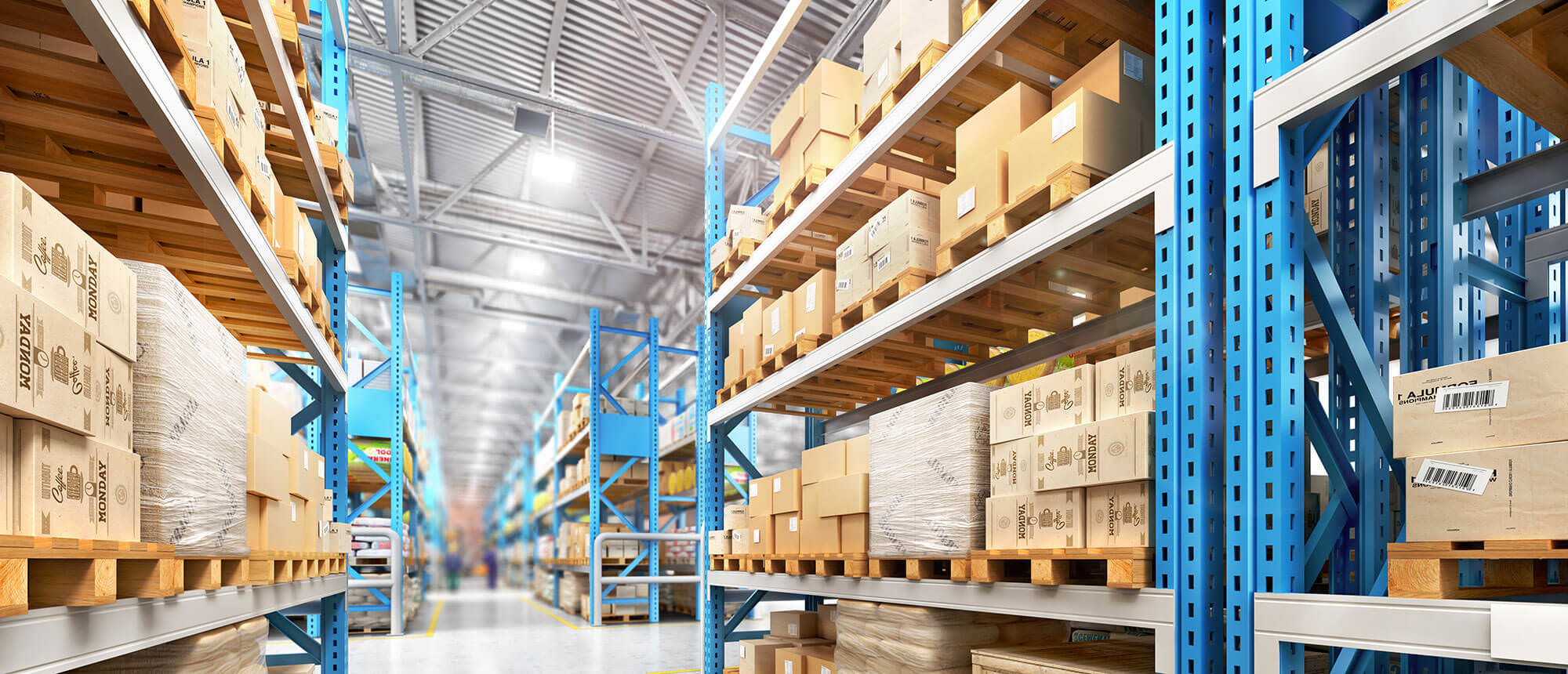Table of Contents
** Minutes
What does a warehousing solution do?
How do fulfilment centres work?
What is a fulfilment warehouse?
What are the differences between warehousing and fulfilment centres?
Benefits of using a fulfilment centre
3 examples of companies using fulfilment centres
Streamline fulfilment with ShipBob’s WMS
Key Takeaways
1
Warehouses primarily store inventory for extended periods, while fulfilment centres focus on quickly processing and shipping orders to customers.
2
Fulfilment centres handle a range of logistics activities, including order picking, packing, and shipping, often partnering with third-party logistics providers.
3
Outsourcing fulfilment to a professional centre can save time and improve efficiency, allowing businesses to focus on strategic growth rather than operational tasks.
4
Fulfilment centres often offer expedited shipping options and use technology to provide real-time inventory management and order tracking for ecommerce businesses.
The terms “warehouse” and “fulfilment centre” (or “distribution centre“) are often used interchangeably – but in reality, the two have very different connotations.
While both are large buildings that hold inventory for businesses that sell goods, they each have their own unique use cases, and serve different purposes for ecommerce brands.
In this article, we’ll define and break down the definitions and benefits of fulfilment centres and warehouses, as well as the key differences between the two so you have a better idea of which option is best for your business needs.
What does a warehousing solution do?
A warehouse is a large storage centre or industrial space designed to house inventory in bulk. A warehousing solution refers to a company that stores products on a business’s behalf within their warehouses for an extended period of time.
Warehouses can be dedicated to storing only certain types of inventory. For example, some warehousing providers geared toward wholesale business may only store inventory dedicated toB2B ecommerce orders.
When it comes to acquiring warehouse space, brands have two options: buy (or build) their own, or lease warehouse space from an outside warehousing provider. Larger brands or retailers with lots of resources may be able to afford their own warehouse; for small businesses, leasing warehouse space is typically more cost-effective – especially if they partner with a warehousing partner and rent space in a warehouse in conjunction with other ecommerce businesses.
What is a fulfilment centre?
A fulfilment centre is a part of the supply chain and serves as the hub for all logistics processes needed to get a product from the seller to the customer. It houses all of the activities involved in the order fulfilment process, ranging from order picking and processing to packaging and shipping.
As with warehousing, ecommerce brands have two options when it comes to finding a fulfilment centre: either operate their own, or partner with a third-party logistics (3PL) provider, such as ShipBob, that operates their own facility (or facilities).
How do fulfilment centres work?
In a fulfilment centre, an ecommerce business’s inventory is received and briefly stored in preparation for fulfilling customer orders. After a shopper completes a purchase on the business’s ecommerce store, that inventory is picked, packed in a box or poly mailer, and labelled for shipment. Last-mile couriers then pick up labelled packages from the fulfilment centre, and transport them to the end customer.
Fulfilment centres can process both business-to-business (B2B) orders — typically a high volume of product that is sent to a big-box retailer — as well as direct-to-consumer (DTC) orders, which are shipped directly to an individual consumer’s home.
When a seller outsources ecommerce fulfilment, the fulfilment provider is completing the fulfilment process on the store owner’s behalf. This includes everything from inventory management to negotiating rates with shipping couriers.
Outsourcing order fulfilment processes to a fulfilment professional can make it easier to manage inventory, improve customer service, and save the seller lots of time to focus on more strategic tasks.
What is a fulfilment warehouse?
A fulfilment warehouse is another term for “fulfilment centre”. A stand-alone warehouse differs drastically from a fulfilment warehouse, as a warehouse is usually a place where inventory is just stored, while a fulfilment warehouse serves many other purposes and houses many other activities besides inventory storage.
What are the differences between warehousing and fulfilment centres?
Let’s take a deeper look at a few of the nuances that distinguish fulfilment centres from warehouses.
Long-term storage vs. short-term storage
While there is a warehousing component to fulfilment centres — in that it does store a merchant’s inventory — the main goal of a fulfilment centre is to turn inventory over quickly.
Ideally, inventory should not sit in a fulfilment centre for more than a month, or the merchant may be stuck paying high inventory holding costs. Sellers should only store enough inventory in their fulfilment centres to make sure there is always enough product on hand to meet demand.
Conversely, the role of a warehouse or an on-demand warehousing solution is to store products for long periods of time.
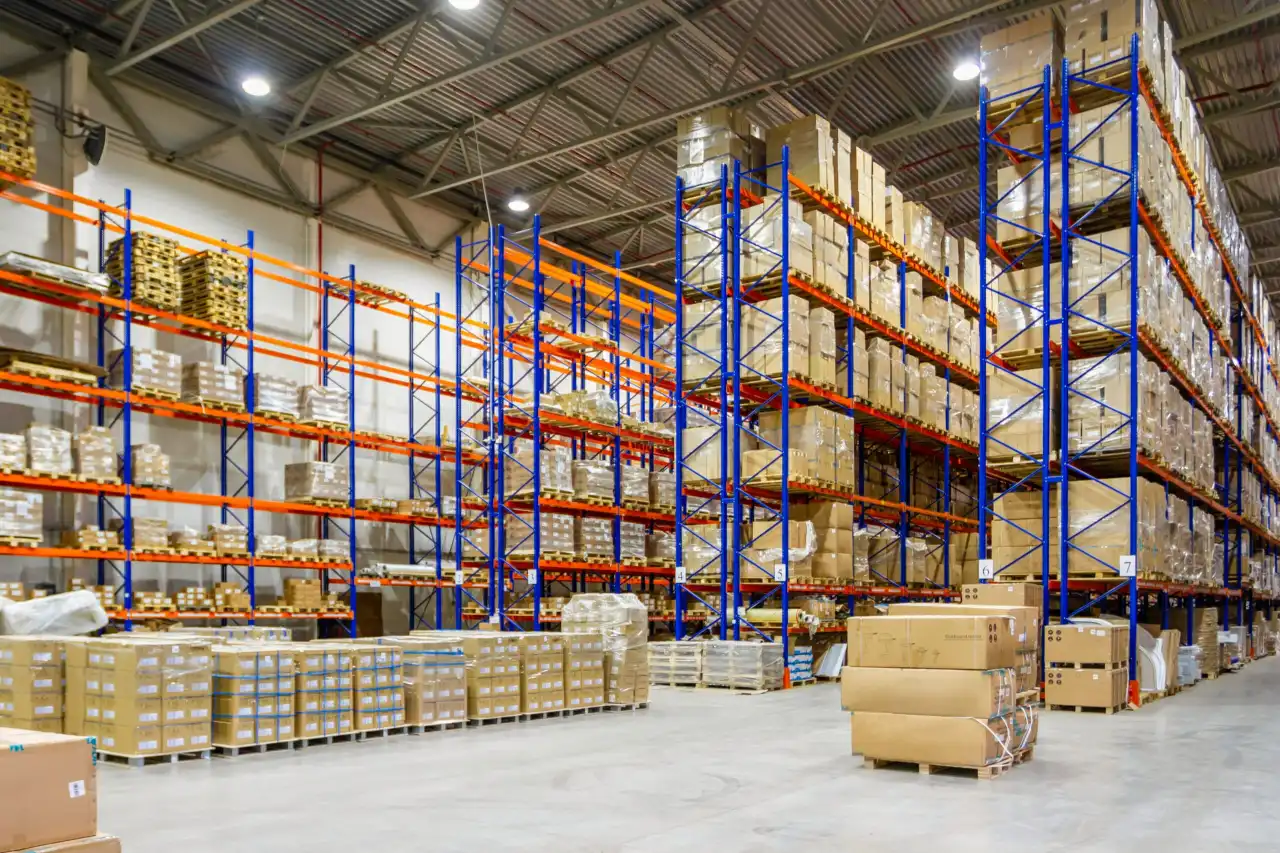
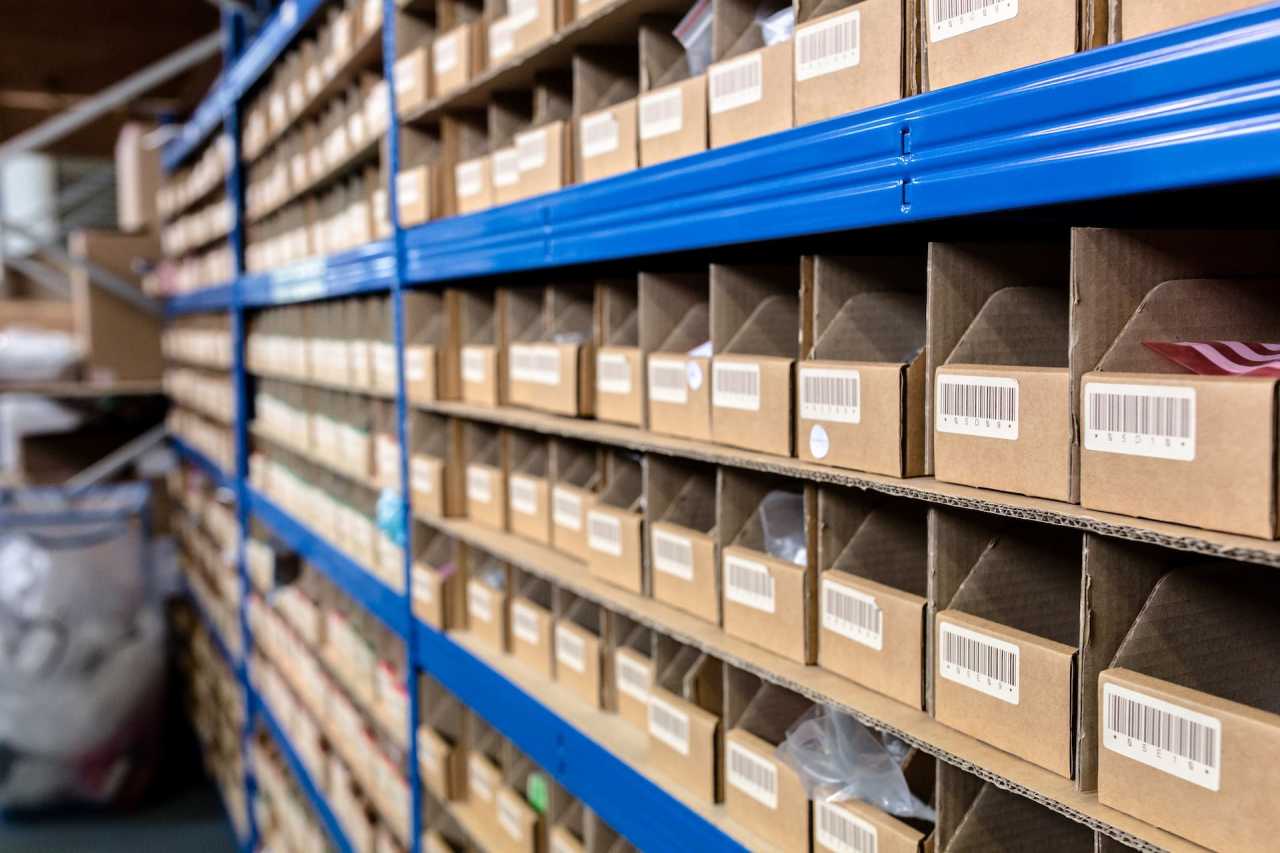
Operations
Warehouses are generally static, with the main activity being receiving inventory or transferring it out.
Fulfilment centres, on the other hand, are hubs of activity, full of continuous movement and much more complex operations. A fulfilment partner provides a variety of order fulfilment services in a fulfilment centre, including:
- Receiving, checking, and stowing inventory
- Generating pick lists and picking products
- Kitting and assembling shipments
- Packing boxes
- Labeling shipments
- Shipping orders
- Managing returns


Frequency of pickups by shipping couriers
A fulfilment company can have relationships with many different shipping couriers. Since a fulfilment centre’s goal is to fulfil direct-to-consumer orders as soon as they are placed, they need shipping couriers to pick up shipments at least daily. This ensures orders will be delivered to consumers on time as promised.
Depending on the exact services a fulfilment company offers, shipping couriers may need to pick up customer orders at certain times each day for guaranteed same-day or next-day shipping options chosen by customers. Other couriers and services will have regularly scheduled pickups, for both domestic and international shipments.
Retail fulfilment companies will have cutoff times by which orders must be placed to be fulfilled that same day. For example, ShipBob offers same-day fulfilment for DTC orders imported into the ShipBob dashboard by the time of the outbound fulfilment SLA (ranging from noon to 6pm local time of the fulfilment centre fulfilling it, depending on the location).
Conversely, a warehouse will typically need scheduled, less frequent pickups, since it is more cost-effective to ship freight and have boxes wrapped together on a pallet instead of generating individual shipping labels.
Freight companies try to pool inventory from various pickup locations for PTL and LTL freight shipments, which can cause a delay in pickup/delivery time, so merchants should allow for a longer turnaround time from prep to pickup.
Benefits of using a fulfilment centre
Here are some of the top advantages that online sellers enjoy when they leverage a professional partner’s fulfilment centres.
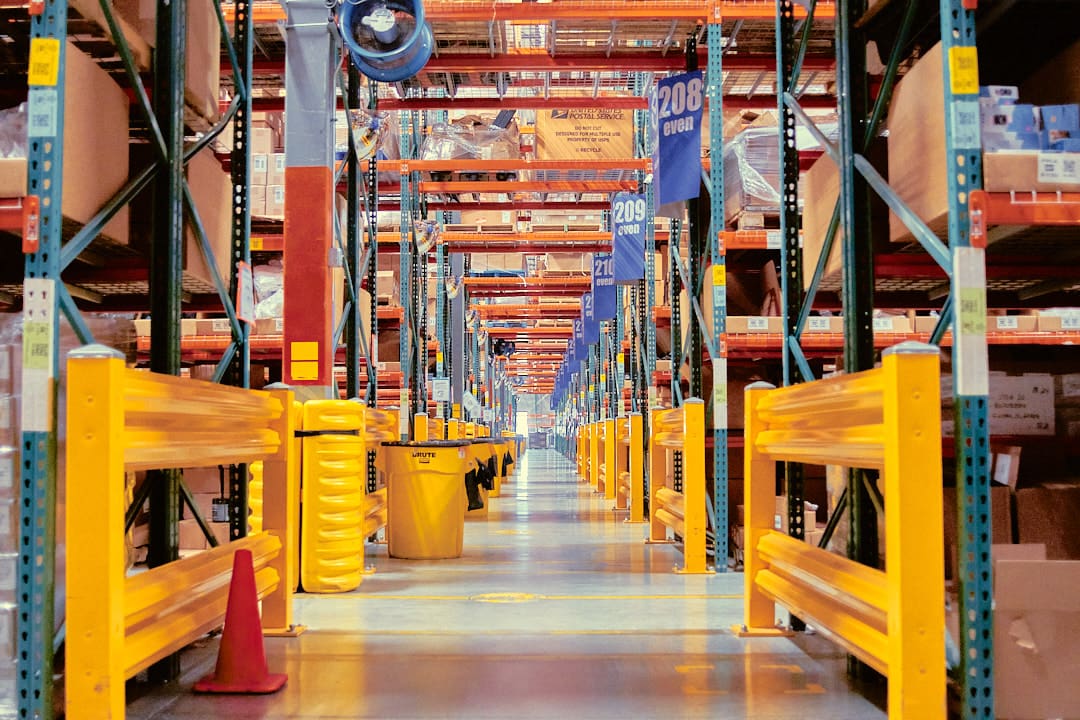
Eliminate storing inventory and packing boxes
Managing a storage space can be expensive, time-consuming, and physically exhausting. It’s no surprise that many ecommerce businesses want to avoid the hassle of storing inventory or dealing with ecommerce warehousing.
If you don’t want to pack boxes and run to the post office every day, a fulfilment centre is a great alternative. Fulfilment providers can store hundreds of thousands of inventory units, so you don’t have to worry about running out of space – and as your order volume grows, a fulfilment partner has the flexibility to scale up its workforce and fulfil larger and larger batches of orders for you.

Focus on the big picture
While packing boxes and shipping customer orders are critical to meeting consumer expectations, they are tasks that can be easily outsourced. Entrepreneurs and online store managers have an endless to-do list, so they must stay laser-focused on the tasks that only they can do and those that will help them scale and make money.
Outsourcing order fulfilment frees up time that you can then spend on marketing, customer service, and product management to help your ecommerce business be more strategic and less operational. There will never be enough time in the day, but using a professional fulfilment centre can help sellers be more proactive in other areas of the business.
“At the scale we’re starting to operate at, keeping everything in-house would mean that we would be picking and packing orders all day! We have even bigger ambitions for our business going forward, including launching new products and increasing stock. So we wanted to free up our time to focus on growing our business, and knew it was time to outsource fulfilment to experts like ShipBob.”
Adelina Zotta & Connor Westby, Co-Founders of NutriPaw

Leave it to the experts
Inbound and outbound logistics can be challenging, and a fulfilment centre is a complex machine with many moving pieces that must simultaneously work together. From order processing and inventory management to preparations for peak shopping seasons, fulfilment companies are domain experts and have seen it all.
A single fulfilment centre handles fulfilment operations for countless ecommerce businesses and ships millions of orders out regularly. Because of this, their volume and experience make them a strategic partner.
Fulfilment companies can also drive greater efficiencies in everything from the low shipping rates they negotiate with couriers to the number, size, and locations of their fulfilment centres — all to be utilised by the ecommerce businesses they work with.
“ShipBob can handle our order volume because they’re experts at what they do. The last company I worked at had their own warehouse, and I witnessed firsthand how messy and complicated fulfilment can be, especially at scale when it’s not what your company specializes in. ShipBob’s fulfilment centres are nothing like that. I’ve been to multiple ShipBob locations, and I’ve seen how much they’ve invested into automation and how organised everything is. It’s no wonder that orders get out within 24 hours of being received – ShipBob is really good at what they do.”
Tyler McCann, Co-Founder of Taste Salud

Automate warehousing and fulfilment
Modern fulfilment companies keep technology at the centre of their fulfilment services. This means that every step of the fulfilment process is automatically documented in real-time for ecommerce businesses to know the status of their inventory and each order in the fulfilment centre without having to be there.
This is possible when fulfilment solutions have built-in integrations with ecommerce platforms and marketplaces. This connection enables each customer order to be automatically sent to fulfilment centre to get picked, packed, and shipped out. Once shipped, tracking info is pushed back to the ecommerce store and shared with the customer.
“Even though ShipBob is fulfilling our orders, I still get visibility into and control of the process with what they’re doing. Wherever I am in the world, I can log in to my ShipBob dashboard and know exactly what’s going on with our orders. ShipBob is dependable, so I can trust that a customer will get their product within two days, even if I’m not in the office or even near the vicinity.”
Kelly Bond, Operations Manager at Elle Sera
3 examples of companies using fulfilment centres
Many ecommerce businesses make the choice to work with a fulfilment company after self-fulling orders themselves. Read a couple stories below.
1. Taste Salud
When Tyler McCann and Josh Leyva first started their drink mix brand Taste Salud, they figured they could handle fulfilment themselves. But when their first 500 units sold out in just a couple hours, the pair quickly realized they were in over their head – so they started looking for a fulfilment solution that could scale with them.
With their orders being picked and packed by ShipBob, Taste Salud’s team was free to focus on growing their business – and grow they did. The brand scaled from $0 to $20M in revenue in just 3 years, and have had zero hiccups in fulfilment along the way.
“Personally, when I hear about people trying to do their own fulfilment, I’m kind of skeptical. Having gone through that experience of packing orders, I would tell anyone that’s thinking about starting a business that it’s really, really well worth your time to consider partnering with a professional like ShipBob. A lot of people think, “I don’t need that,” or “I don’t want to waste money on a fulfilment provider.” But in reality, partnering with an expert like ShipBob will free up so much of your time, speed up shipping, and lead to a better customer experience.”
Tyler McCann, Co-Founder of Taste Salud



2. Our Place
As a viral success and mid-market business, the viral cookware and dishware brand Our Place knew they needed a fulfilment partner with exceptional operational capabilities. By outsourcing fulfilment to ShipBob, they found both the technology and geographic footprint that would help them scale.
Leveraging ShipBob’s dashboard, Our Place is able to manage both their DTC and B2B fulfilment through a single platform, so they can seamlessly distribute inventory to retailers like Target and Nordstrom without having to juggle two different pools of inventory.
Our Place also uses ShipBob’s Inventory Placement Program (IPP) to split their inventory across 4 of ShipBob’s dozens of global fulfilment centres. This not only saved them $1.5M in freight costs alone, but also cut their shipping times in half. Now that 2-day shipping via inexpensive ground shipping is possible for Our Place, they can push out their holiday shipping cutoffs and realize another $2M in revenue pre-Christmas.
“Expanding our warehouse network from 2 to 4 warehouses has translated into substantial cost savings, amounting to $1.5 million in freight expenses for Our Place. Currently, only 2% of our parcels are reaching Zone 7 or Zone 8 collectively, indicating that 98% of our parcels are reaching Zones 1 through 6. By shipping locally to lower zones, we’re achieving the most significant reductions in outbound costs.”
Ali Shahid, COO of Our Place


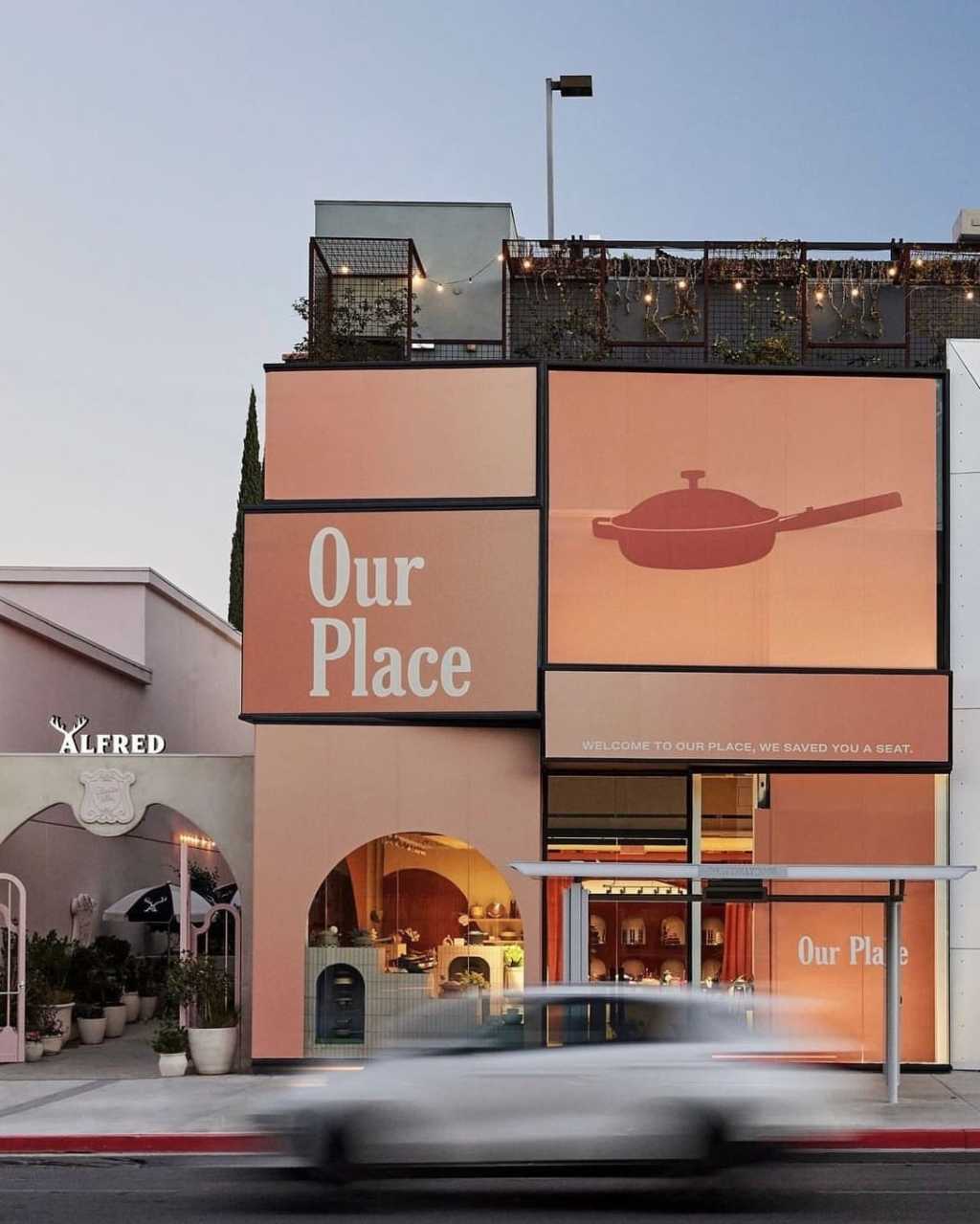
3. Peak and Valley
Supplement brand Peak and Valley is a B2B-first company, with 95% of their revenue coming through retail channels such as CVS, Vitamin Shoppe, Kroger, and Whole Foods. Founder Nadine Joseph started out fulfilling B2B orders herself, but quickly discovered that she would rather focus on more strategic priorities.
It only took her 3 days to onboard with ShipBob. Now, Peak and Valley leverages ShipBob’s EDI-automated B2B fulfilment solution to automatically process order, save time, and stay fully compliant with each retailer’s unique EDI requirements.
“I started off fulfilling B2B orders myself out of my own little warehouse in Seattle, but soon became aware of how extremely challenging it is to manage a warehouse. It would take me hours to input all the data for every B2B order. I quickly discovered that was not for me, and that I wanted to focus on the product and sales.
ShipBob knows how to fulfil orders for major retailers, and that knowledge shines through in their EDI-automated B2B solution. With important details that differ between retailers – like freight carrier preferences or limitations on package and pallet size – ShipBob automatically complies with them. I don’t have to keep tabs on or communicate those details anymore. It’s a huge time-saver for my team.”
Nadine Joseph, Founder & CEO of Peak and Valley


Streamline fulfilment with ShipBob’s WMS
Need help managing fulfilment, but don’t want to outsource it? ShipBob has a best-in-class warehouse management system (WMS) that brands can use in their own warehouse to improve inventory management, reduce errors, and scale in-house operations with ease.
Business can maintain control of their warehouse operations while leveling them up using ShipBob’s WMS capabilities, including:
- Easy-to-learn tools (so ramping up staff and temp workers is easy)
- Prescriptive step-by-step packing flows and built-in visuals (like GIFs to show an exact pack-out process)
- Uploaded images of your products for checks and balances at every stage of receiving, pick, and pack
- Location-specific inventory visibility and top-level order fulfilment metrics across all warehouses and order counts at the picked/packed/labelled statuses
- Carrier and shipping service selection to find the most optimal transportation routes
- Flexible options for batch, auto-cluster, custom cluster, and single-order picking
- Virtual or on-site implementation with zero down time, led by operations experts
- Dedicated Account Manager for one-on-one support and quick troubleshooting
Brands can even adopt a hybrid fulfilment model, employing ShipBob’s WMS technology in their own warehouses while simultaneously leveraging ShipBob’s fulfilment services in any of ShipBob’s fulfilment centres across the US, Canada, Europe, and Australia to improve cross-border shipping, reduce costs, and speed up deliveries.
Or grow global with ShipBob’s fulfilment centres
With dozens of fulfilment centres across 3 continents, ShipBob’s global network makes it easy for growing brands to expand internationally.
Ecommerce businesses can store inventory locally in ShipBob’s fulfilment centres in the UK, mainland Europe, Australia, and Canada to minimise shipping costs and times for customers in and near those countries, as well as minimise cross-border shipping complexities.
To learn more about ShipBob, request a pricing quote and speak with a fulfilment expert at the link below.
Fulfilment centre FAQs
Here are answers to some of the most common questions about fulfilment centres.
Do fulfilment centres handle inventory management?
Yes! Fulfilment centres receive inventory, sort and shelf products in their respective bin, shelf, or pallet locations, and keep track of units on-hand. The goal of a fulfilment centre is to turn over stock quickly and ship orders out as efficiently as possible.
Most fulfilment centres will provide technology to help ecommerce businesses manage their inventory from afar, including inventory tracking tools that help you know when to proactively reorder product to prevent stockouts.
How many square feet do I need?
If you choose to self-fulfil your customer orders, the total square footage you need to manage your inventory will depend on several factors, including:
- One is the amount of unique SKUs you have.
- Your order volume.
- Your immediate and future growth plans
Warehouse space is becoming more difficult to find, and more expensive to rent or purchase – especially near locations where customers reside, such major cities and metropolitan hubs. If you work with a fulfilment company, each fulfilment centre will likely have hundreds of thousands of square feet shared among ecommerce companies.
Can a fulfilment centre do one- or two-day delivery?
Yes, many fulfilment centres offer expedited delivery options, including same-day and two-day shipping. The exact services will depend on the geographic location of the fulfilment centre, the technology and operations in place, and the couriers used. Read the Guide to Offering Affordable 2-Day Shipping to learn more.
How does order processing work?
An order is processed after a customer makes a purchase on your ecommerce store. The ecommerce platform that powers the store will send the order details to the technology used at the fulfilment centre. This alerts fulfilment centre staff to retrieve the ordered products, pack them into a box, label the package, and get the order shipped.
From there, tracking information can be pushed back to the ecommerce platform and shared with the customer so they know where their order is every step of the way.
What is a good price for fulfilment solutions?
When self-fulfilling customer orders, you will be responsible for procuring and paying for your warehouse space and equipment, staff salaries, warehouse management system, workers’ comp and liability insurance, boxes and packing supplies, postage, and more. Given the many direct and indirect logistics costs, the exact cost is often underestimated.
The cost of outsourcing fulfilment will vary between fulfilment companies, but typically your fees will include receiving your inventory, warehousing or storing items, and shipping products. Depending on the fulfilment provider, there may also be individual fees for each task, such as warehouse picking, packing, among other line items.
Outsourcing fulfilment services may end up being more expensive than self-fulfilment, but it often is done to save time. Since each fulfilment company prices their services slightly differently, you will need to examine the entire fulfilment cost, taking every possible fee into consideration.
What kind of customer service should I expect?
Fulfilment companies should empower you to run your ecommerce business with the right tools and guidance. Depending on your order volume, you may have a dedicated account manager. Otherwise, expect a team to support your business and answer any questions you have.
The service you receive may also depend on whether the fulfilment company staffs their own fulfilment centre(s) or works with outside staff.
Regardless, you should expect transparency and visibility into any fulfilment company’s performance.
How do Amazon fulfilment centres work?
Amazon fulfilment centres are very similar to fulfilment centres run by other fulfilment providers. Amazon, however, has an extremely extensive fulfilment network, and typically only fulfils Amazon orders from those facilities (though Amazon’s MCF service is an option for merchants looking to fulfil orders for all their channels using their FBA inventory).
How many fulfilment centres does ShipBob have?
ShipBob has 60+ fulfilment centres across its global network.
Where are ShipBob’s fulfilment centres located?
ShipBob’s fulfilment centres are in the US, Canada, the UK, the EU, and Australia. For an up-to-date list of specific locations, please refer to this page.
How do ShipBob’s fulfilment centres differ from standard warehousing?
ShipBob’s fulfilment centre goes beyond simple storage by offering a comprehensive, end-to-end logistics solution.
- Integrated services: ShipBob handles the entire process from receiving inventory, secure storage, to picking, packing, and shipping orders directly to customers (both DTC and B2B, from TikTok to Target), as well as value-added services like kitting, customisation, returns, freight, and much more.
- Advanced technology: The entire network is powered by proprietary software designed to automate processes, optimise for time and cost, and enhance the delivery experience. This includes an all-in-one platform for warehouse, inventory, order, and transportation management. You can view real-time inventory levels and orders across channels and fulfilment centre locations from a single place.
- Distributed network: ShipBob operates a global network of dozens of fulfilment centres across the US, Canada, Europe, and Australia, enabling brands to strategically place inventory closer to customers for faster and more cost-effective shipping. You can track all orders across locations from a single login.
What additional services (e.g., kitting, returns, customer support) does ShipBob provide beyond storage?
ShipBob provides a wide range of services to enhance the entire order fulfilment experience:
- Kitting & bundling: ShipBob can assemble individual products into pre-packaged kits, and also allow brands to virtually bundle multiple SKUs to be sold together.
- Returns management: ShipBob processes both return-to-sender and customer-initiated returns. Brands can set preferences to restock, dispose of, or quarantine returned products automatically. Integrations with partners like Loop and AfterShip are available. Return labels can be purchased from ShipBob at a discount, or brands can provide their own.
- Customer support: ShipBob offers support through chat, email, a case portal, and phone, with on-site representatives at each fulfilment centre to assist with issues.
- Omnichannel fulfilment: ShipBob supports direct-to-consumer (DTC) and business-to-business (B2B) fulfilment within the same network, including retail dropshipping, distribution, and Amazon FBA prep. This also includes EDI compliance for 100+ major retailers.
- Customisation Suite: Brands can create personalised unboxing experiences using their own custom-branded boxes, poly mailers, and marketing inserts. Brands must provide custom packaging materials to ShipBob for storage. ShipBob can also print gift notes and inserts on demand.
- Inventory management: Features include real-time inventory tracking at the SKU level, lot tracking, and expiration date management for consumable goods. Reorder notifications and replenishment recommendations help prevent stockouts.
- Freight services: ShipBob Freight manages inbound and outbound B2B shipments, from coordinating pickups at ports or factories to delivery to ShipBob locations or retail/Amazon centres.
- Warehouse management system. For brands that fulfil orders in-house from their own warehouse(s), ShipBob’s WMS helps streamline warehouse operations and boost efficiency. It is a comprehensive platform for managing warehouse, inventory, order, and transportation operations.
How does ShipBob use technology to improve picking accuracy and minimise errors?
ShipBob’s proprietary technology is central to its operational efficiency and accuracy:
- Proprietary software & WMS: The entire fulfilment network operates on ShipBob’s proprietary software and warehouse management system (WMS), which is designed to streamline operations and enhance efficiency. This system helps reduce labour costs and lost inventory.
- SKU management: The Product Catalogue in the ShipBob dashboard assigns unique SKU identifiers to ensure consistency across all sales channels and serves as a single source of truth for inventory. Real-time inventory tracking at the SKU level maintains accurate stock availability.
- Barcode scanning: Every unit can be barcoded, allowing for scanning at receiving, picking, and packing to provide real-time information on product location and quantities. This is a core component of efficient and accurate fulfilment.
- Lot & expiration date management: For consumable goods, ShipBob’s lot tracking feature provides full visibility and control. The system automatically prioritizes picking items based on expiration dates (FEFO) to ensure compliance and reduce waste.
- Optimised packaging: ShipBob’s box selection algorithm determines the most suitable package type and size based on product dimensions, contributing to consistent fulfilment pricing and efficiency. ShipBob uses Geami paper or kraft paper for dunnage.
What is the difference between a warehouse and a fulfilment centre in ecommerce?
At a glance…
- A warehouse is primarily a storage facility; goods are shelved, and brands or partners handle order picking, packing, and shipping.
- A fulfilment centre handles everything end-to-end; receiving inventory, storing, order picking, packing, shipping, and sometimes even customer service.
In essence, a fulfilment centre functions like a warehouse plus complete logistics operations designed to turn inventory into orders with minimal effort from the brand.
When should a brand choose a fulfilment centre over a traditional warehouse?
Brands should opt for a fulfilment centre when they need:
- Comprehensive logistics support, not just storage
- Scalable operations, especially for growing DTC or omnichannel brands
- Integrated services, like kitting and returns, without managing operations in-house
- Faster order turnaround to meet customer delivery expectations
Fulfilment centres help brands streamline operations and reduce overhead by outsourcing the logistics burden.
How do costs compare between warehousing and end-to-end fulfilment with ShipBob?
ShipBob offers an all-in-one pricing model that has separate line items for receiving, storage, and an all-in fulfilment cost, often reducing overall logistics costs compared to traditional warehousing or fragmented providers.
- Transparent pricing: Includes standard storage (by bin, shelf, or pallet) and receiving, an all-in fulfilment/shipping cost, and no hidden software fees.
- Demonstrated savings: Brands like Our Place, Spikeball, and Aroma360 have reported major cost reductions of up to 45% on shipping and millions of dollars saved in freight and fulfilment costs.
- Optimisation tools: Leveraging ShipBob’s Inventory Placement Program (IPP) and their platform’s native algorithms help reduce transit times and drive down per-order costs.
- Custom rates: Exact pricing varies by order volume, product and weight, and complexity. Custom quotes are available for each merchant by submitting the form here.
While traditional warehousing is cheaper upfront, ShipBob’s integrated model typically delivers more value when factoring in labour, shipping, software, and fulfilment efficiency through their economies of scale.

